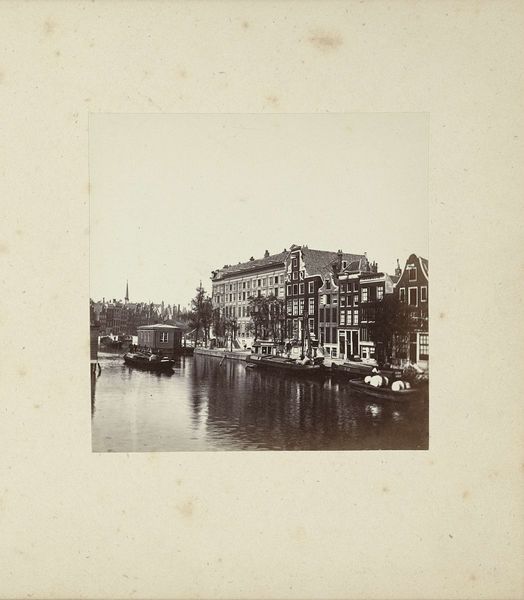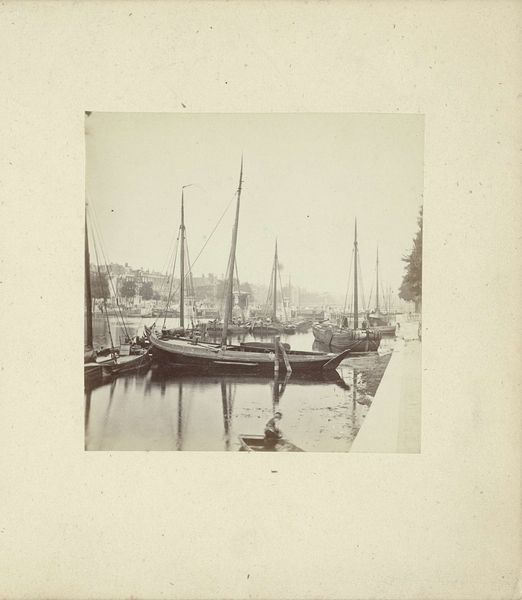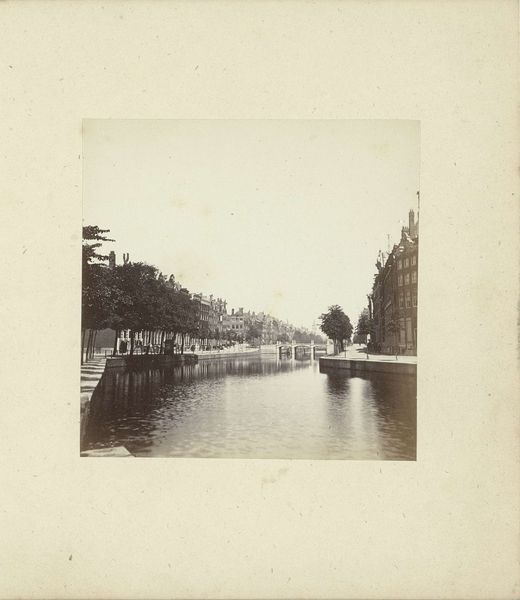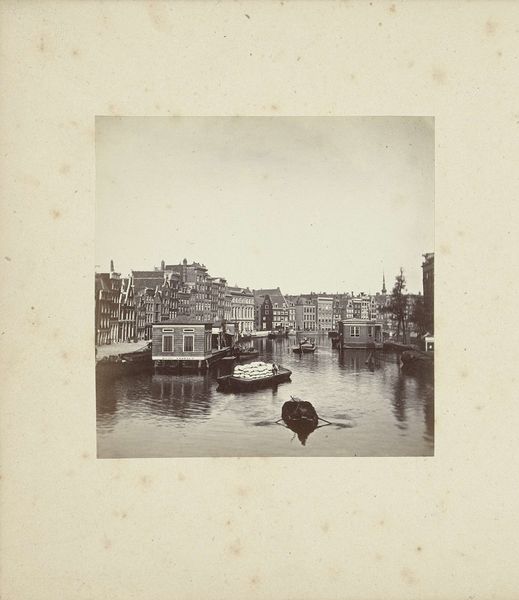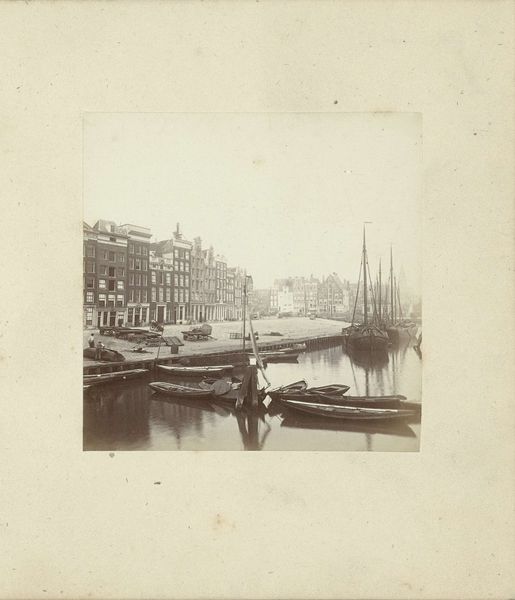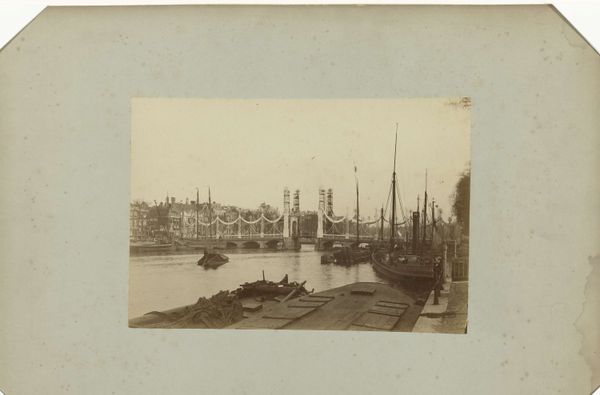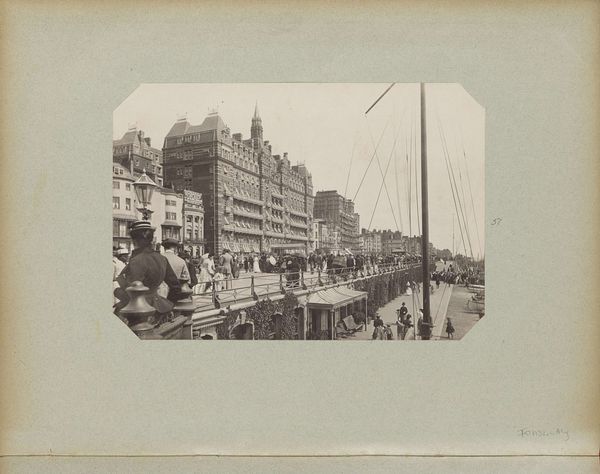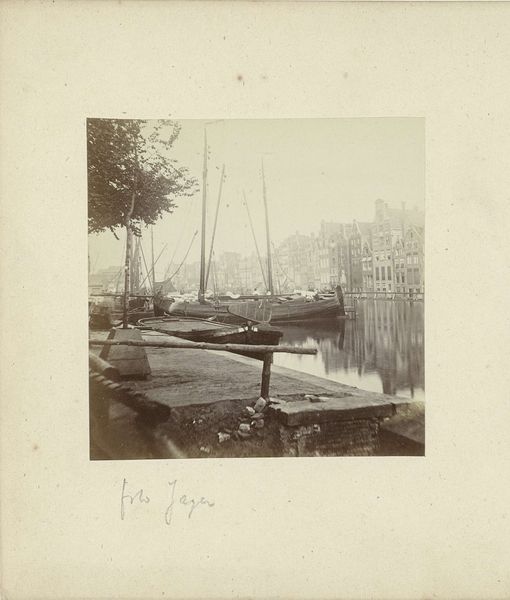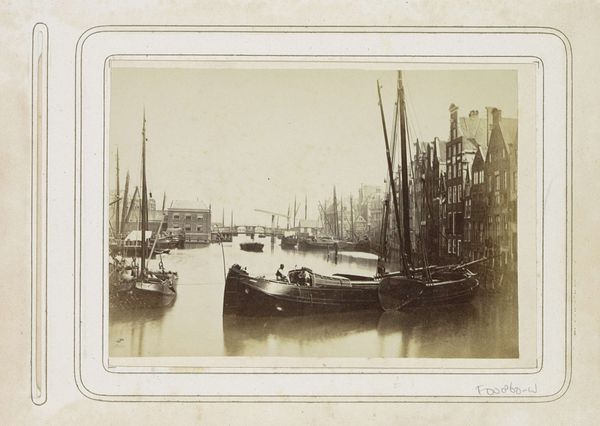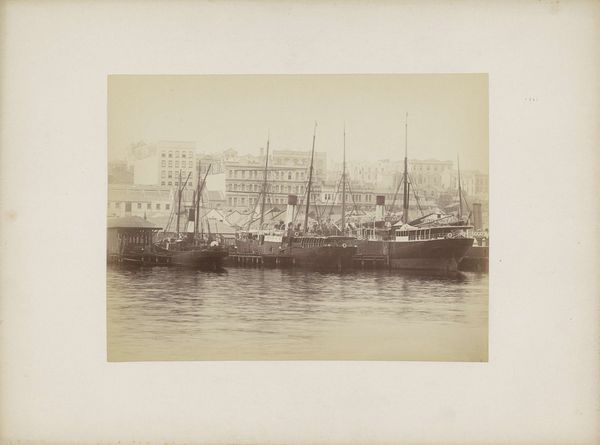
photography, gelatin-silver-print
#
dutch-golden-age
#
landscape
#
photography
#
gelatin-silver-print
#
cityscape
#
realism
Dimensions: height 82 mm, width 82 mm, height 145 mm, width 234 mm
Copyright: Rijks Museum: Open Domain
Editor: This is "Gezicht over de Amstel in Amsterdam," a gelatin silver print dating from around 1860-1875. It’s by an anonymous photographer and captures a scene of the Amstel River in Amsterdam. It strikes me as a very still and orderly image, very different from how I experience Amsterdam today. What do you see in this photograph? Curator: What I find compelling is how this image, ostensibly a simple cityscape, speaks to a pivotal moment in the construction of Dutch identity and its relationship to global trade. The Dutch Golden Age, with its powerful merchant class and colonial ventures, left an indelible mark on the city's architecture and social fabric, reflected in this photograph. How might the order you perceive, the "stillness," mask the dynamics of power at play during this era? Consider, for example, whose perspectives are prioritized in the frame, and whose are omitted. Editor: I hadn't considered that angle. The absence of people, or any real sign of the city's activity, seems deliberate now. Almost like a sanitized portrait. Is that something common for the period? Curator: Exactly. This connects to a broader trend in 19th-century photography—the idealization of urban landscapes. Realism, in this case, is less about reflecting reality and more about shaping a specific narrative. One could argue that it is about a carefully constructed image of prosperity and control, deflecting from underlying social tensions and colonial exploitation that funded much of this grandeur. What questions does this raise for you about the role of photography in shaping our understanding of history? Editor: It definitely makes me question the photographer's intentions and how photographs from the period have been used since. I came in thinking about a calm city scene but I am leaving considering photography’s complex social agenda. Curator: Precisely. And that’s where the real value lies – not just seeing what's in the frame, but questioning what’s just outside of it, shaping its narrative.
Comments
No comments
Be the first to comment and join the conversation on the ultimate creative platform.
